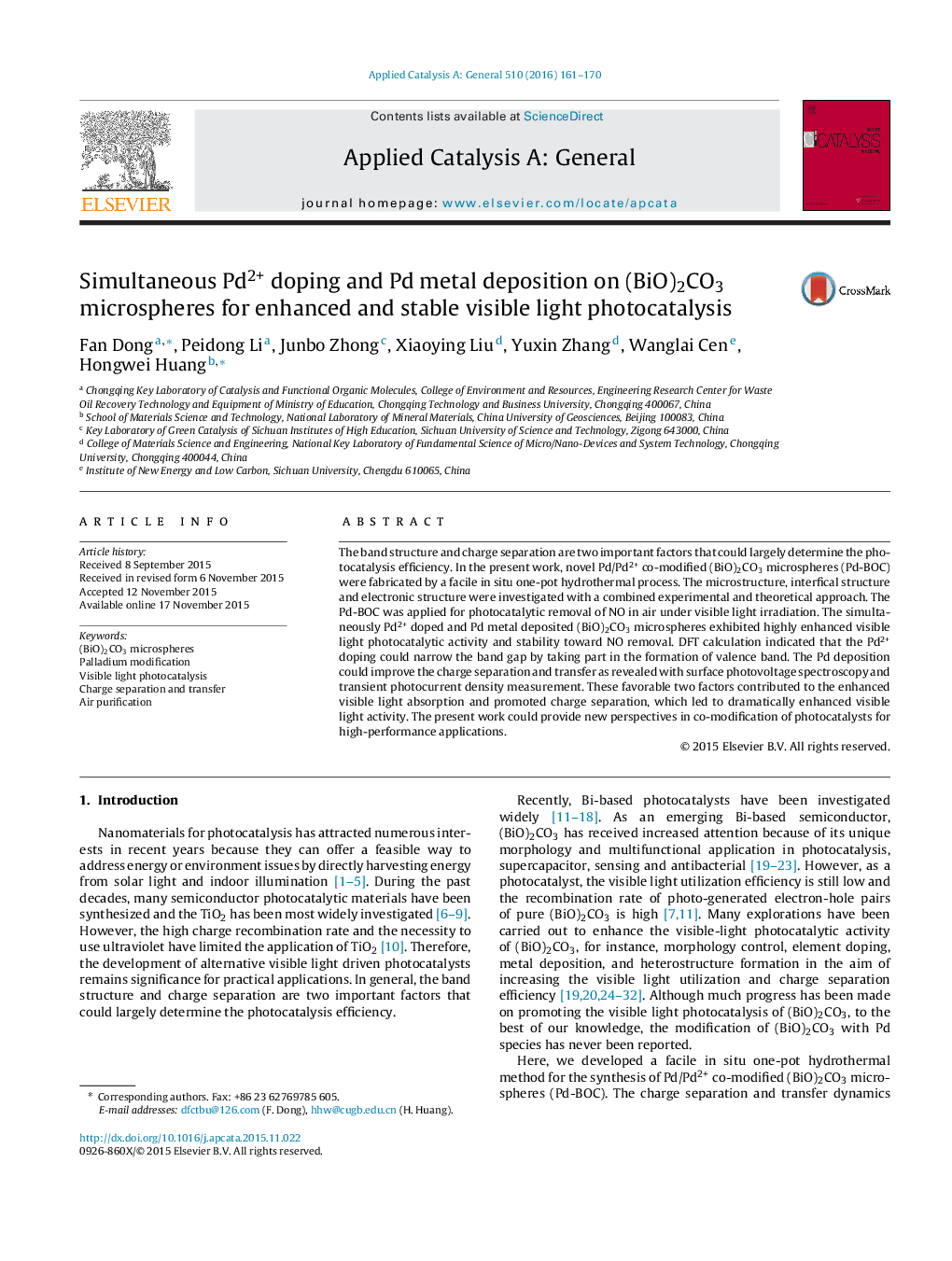| Article ID | Journal | Published Year | Pages | File Type |
|---|---|---|---|---|
| 39025 | Applied Catalysis A: General | 2016 | 10 Pages |
•The Pd/Pd2+ co-modified (BiO)2CO3 microspheres were fabricated hydrothermally.•Pd/Pd2+ co-modified (BiO)2CO3 exhibited highly enhanced visible photocatalysis.•The doped Pd2+ could elevate the valence band and narrow band gap.•The Pd metal deposition could improve the charge separation and transfer.•The increased visible absorption and enhanced charge separation were achieved.
The band structure and charge separation are two important factors that could largely determine the photocatalysis efficiency. In the present work, novel Pd/Pd2+ co-modified (BiO)2CO3 microspheres (Pd-BOC) were fabricated by a facile in situ one-pot hydrothermal process. The microstructure, interfical structure and electronic structure were investigated with a combined experimental and theoretical approach. The Pd-BOC was applied for photocatalytic removal of NO in air under visible light irradiation. The simultaneously Pd2+ doped and Pd metal deposited (BiO)2CO3 microspheres exhibited highly enhanced visible light photocatalytic activity and stability toward NO removal. DFT calculation indicated that the Pd2+ doping could narrow the band gap by taking part in the formation of valence band. The Pd deposition could improve the charge separation and transfer as revealed with surface photovoltage spectroscopy and transient photocurrent density measurement. These favorable two factors contributed to the enhanced visible light absorption and promoted charge separation, which led to dramatically enhanced visible light activity. The present work could provide new perspectives in co-modification of photocatalysts for high-performance applications.
Graphical abstractFigure optionsDownload full-size imageDownload high-quality image (154 K)Download as PowerPoint slide
